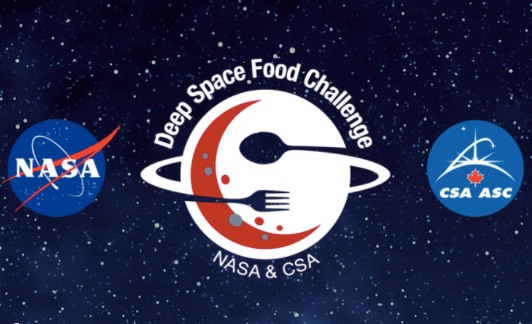In 2017, the three winners of NASA’s Poop Challenge shared a $30,000 prize. Instead of diapers, NASA needed a device that would withstand zero gravity, accommodate up to 6 days of poop, urine and menstruation, and enable walking, bending, and sitting. The prize recipients suggested an air powered system, zero gravity underwear, and perineal access. NASA said they were considering the ideas for their new generation of space suits.
Now NASA is hoping for a “sprouting” food system. Each of 20 teams could win $25,000 and be eligible for Phase 2 of the competition.
The NASA Space Food Challenge
Working with the Canadian Space Agency, NASA wants to develop tasty nutrient-laden food systems that will last for multi-month and even years-long missions. They note that the proposals should also function in “resource-scarce” regions on earth.
More precisely, they have in mind a three-year mission, a four person crew, and a food system with minimal inputs and waste.
NASA’s Innovations
In 2016, the California Jet Propulsion Laboratory listed 20 space related innovations. The list included these items:
- Because NASA needed small cameras for spacecraft, we wound up with phone cameras.
- Nike can thank NASA for Air Trainers that are the descendants of suit construction technology.
- Black & Decker developed the dust buster when NASA asked for a device that would suck up moon samples.
- When they needed hands free communication capability, NASA started us on the road to wireless headsets.
- And we all think of Tang but it really is about freeze dried food that retains the nutrients but sheds the weight of the food that it once was.
Our Bottom Line: Positive Externalities
Defined as the impact of an agreement on an uninvolved third party, a positive externality reflects ripples of something good. Vaccines create positive externalities because their recipients keep unknowing individuals disease free. So too does mowing a lawn when it nudges up nearby home prices. And similarly, the devices that NASA needed for space travel, like dust busters, make countless couch crevices clean.
Returning to where we began, NASA has positive externalities in mind when they suggest that a new food “sprouting” system will help us at home as well as in space.
My sources and more: Thanks to Marginal Revolution for alerting me to the NASA Food Challenge. And thanks to Mason S. for asking me about what you cannot eat in space (and inspiring my creative thinking). From there, I found the NASA poop challenge winners and the California Jet Propulsion Laboratory’s innovation list. Finally, for more on poop, you might enjoy (as did I) this Wired story on NASA’s $23 million toilet (and the target practice it requires).






